Fillthevoid-with-space - Fill The Void With... SPACE
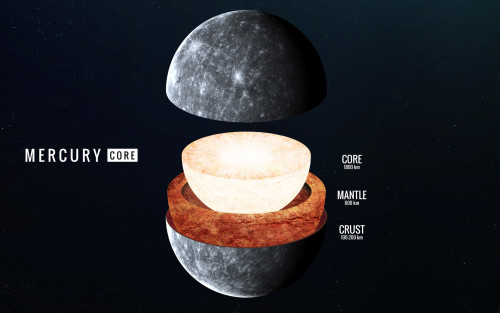
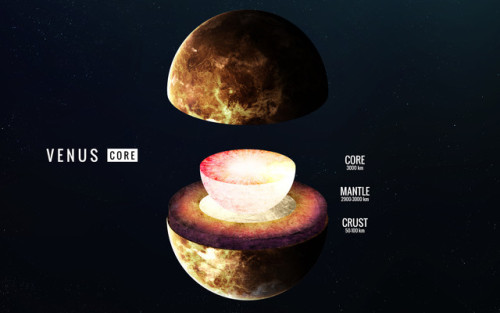

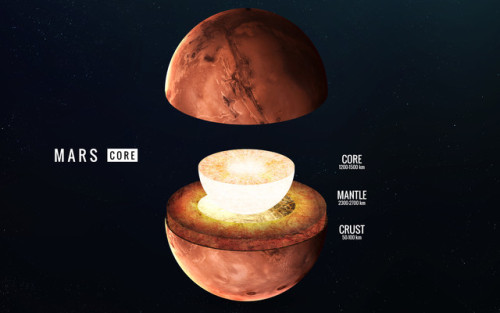
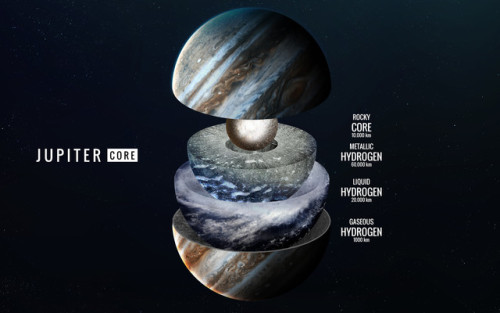
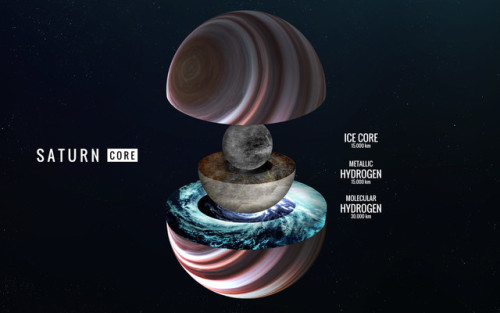
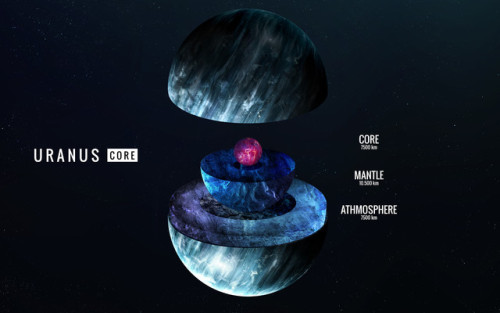
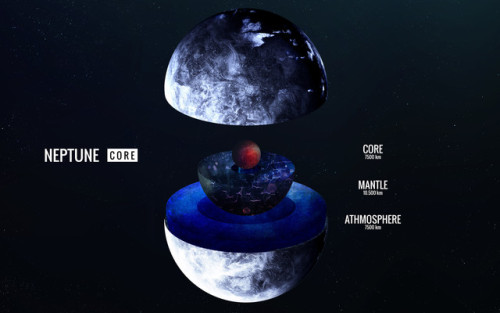
More Posts from Fillthevoid-with-space and Others

Scientists Discover The Oldest, Largest Body Of Water In Existence–In Space
Scientists have found the biggest and oldest reservoir of water ever–so large and so old, it’s almost impossible to describe.
The water is out in space, a place we used to think of as desolate and desert dry, but it’s turning out to be pretty lush.
Researchers found a lake of water so large that it could provide each person on Earth an entire planet’s worth of water–20,000 times over. Yes, so much water out there in space that it could supply each one of us all the water on Earth–Niagara Falls, the Pacific Ocean, the polar ice caps, the puddle in the bottom of the canoe you forgot to flip over–20,000 times over.
The water is in a cloud around a huge black hole that is in the process of sucking in matter and spraying out energy (such an active black hole is called a quasar), and the waves of energy the black hole releases make water by literally knocking hydrogen and oxygen atoms together.
The official NASA news release describes the amount of water as “140 trillion times all the water in the world’s oceans,“ which isn’t particularly helpful, except if you think about it like this.
That one cloud of newly discovered space water vapor could supply 140 trillion planets that are just as wet as Earth is.
Mind you, our own galaxy, the Milky Way, has about 400 billion stars, so if every one of those stars has 10 planets, each as wet as Earth, that’s only 4 trillion planets worth of water.
The new cloud of water is enough to supply 28 galaxies with water.
Truly, that is one swampy patch of intergalactic space.
Equally stunning is the age of the water factory. The two teams of astrophysicists that found the quasar were looking out in space a distance of 12 billion light years. That means they were also looking back in time 12 billion years, to when the universe itself was just 1.6 billion years old. They were watching water being formed at the very start of the known universe, which is to say, water was one of the first substances formed, created in galactic volumes from the earliest time. Given water’s creative power to shape geology, climate and biology, that’s dramatic.
“It’s another demonstration that water is pervasive throughout the universe, even at the very earliest times,” says Matt Bradford, an astrophysicist at NASA’s Jet Propulsion Laboratory and leader of one of the teams that made the discovery. (The journal article reporting the discovery is titled, without drama, “The Water Vapor Spectrum of APM 08279+5255: X-Ray Heating and Infrared Pumping over Hundreds of Parsecs.”)
It is not as if you’d have to wear foul-weather gear if you could visit this place in space, however. The distances are as mind-bogglingly large as the amount of water being created, so the water vapor is the finest mist–300 trillion times less dense than the air in a typical room.
And it’s not as if this intergalactic water can be of any use to us here on Earth, of course, at least not in the immediate sense. Indeed, the discovery comes as a devastating drought across eastern Africa is endangering the lives of 10 million people in Somalia, Kenya, and Ethiopia. NASA’s water discovery should be a reminder that if we have the sophistication to discover galaxies full of water 12 billion light years away, we should be able to save people just an ocean away from drought-induced starvation.
The NASA announcement is also a reminder how quickly our understanding of the universe is evolving and how much capacity for surprise nature still has for us. There’s water on Mars, there’s water jetting hundreds of miles into space from Enceladus, one of Saturn’s moons, there are icebergs of water hidden in the polar craters of our own Moon. And now it turns out that a single quasar has the ability to manufacture galaxies full of water.
But it was only 40 years ago, in 1969, that scientists first confirmed that water existed anywhere besides Earth.
Merging Galaxies Have Enshrouded Black Holes
NASA - NuStar Mission patch. May 9, 2017 Black holes get a bad rap in popular culture for swallowing everything in their environments. In reality, stars, gas and dust can orbit black holes for long periods of time, until a major disruption pushes the material in. A merger of two galaxies is one such disruption. As the galaxies combine and their central black holes approach each other, gas and dust in the vicinity are pushed onto their respective black holes. An enormous amount of high-energy radiation is released as material spirals rapidly toward the hungry black hole, which becomes what astronomers call an active galactic nucleus (AGN). A study using NASA’s NuSTAR telescope shows that in the late stages of galaxy mergers, so much gas and dust falls toward a black hole that the extremely bright AGN is enshrouded. The combined effect of the gravity of the two galaxies slows the rotational speeds of gas and dust that would otherwise be orbiting freely. This loss of energy makes the material fall onto the black hole.
Image above: This illustration compares growing supermassive black holes in two different kinds of galaxies. A growing supermassive black hole in a normal galaxy would have a donut-shaped structure of gas and dust around it (left). In a merging galaxy, a sphere of material obscures the black hole (right). Image Credits: National Astronomical Observatory of Japan. “The further along the merger is, the more enshrouded the AGN will be,” said Claudio Ricci, lead author of the study published in the Monthly Notices Royal Astronomical Society. “Galaxies that are far along in the merging process are completely covered in a cocoon of gas and dust.” Ricci and colleagues observed the penetrating high-energy X-ray emission from 52 galaxies. About half of them were in the later stages of merging. Because NuSTAR is very sensitive to detecting the highest-energy X-rays, it was critical in establishing how much light escapes the sphere of gas and dust covering an AGN. The study was published in the Monthly Notices of the Royal Astronomical Society. Researchers compared NuSTAR observations of the galaxies with data from NASA’s Swift and Chandra and ESA’s XMM-Newton observatories, which look at lower energy components of the X-ray spectrum. If high-energy X-rays are detected from a galaxy, but low-energy X-rays are not, that is a sign that an AGN is heavily obscured.
NASA’s NuSTAR telescope. Image Credit: NASA
The study helps confirm the longstanding idea that an AGN’s black hole does most of its eating while enshrouded during the late stages of a merger. “A supermassive black hole grows rapidly during these mergers,” Ricci said. “The results further our understanding of the mysterious origins of the relationship between a black hole and its host galaxy.” NuSTAR is a Small Explorer mission led by Caltech and managed by NASA’s Jet Propulsion Laboratory for NASA’s Science Mission Directorate in Washington. NuSTAR was developed in partnership with the Danish Technical University and the Italian Space Agency (ASI). The spacecraft was built by Orbital Sciences Corp., Dulles, Virginia. NuSTAR’s mission operations center is at UC Berkeley, and the official data archive is at NASA’s High Energy Astrophysics Science Archive Research Center. ASI provides the mission’s ground station and a mirror archive. JPL is managed by Caltech for NASA. Related link: Monthly Notices of the Royal Astronomical Society: https://academic.oup.com/mnras/article/468/2/1273/2939810/Growing-supermassive-black-holes-in-the-late For more information on NuSTAR, visit: http://www.nasa.gov/nustar http://www.nustar.caltech.edu Images (mentioned), Text, Credits: NASA/Tony Greicius/JPL/Elizabeth Landau. Greetings, Orbiter.ch Full article










Black Holes Are Real And Spectacular, And So Are Their Event Horizons
“Originally estimated to be slightly larger than its M87 counterpart, the black hole at the center of the Milky Way — known as Sagittarius A* — has not yet had its event horizon imaged. When you observe the Universe, you don’t always get what you expect; sometimes, you get what it gives you. Instead, it was M87’s black hole that came through first, which was a much brighter and a much cleaner signal.
What we’ve found is spectacular. Those dark pixels at the center of the image are actually the silhouette of the event horizon itself. The light that we observe comes from the accelerated, heated matter around it, which must emit electromagnetic radiation. Where the matter exists, it emits radio waves, and the dark circle we see is where the background radio waves are blocked by the event horizon itself.”
We have an event horizon, folks! It wasn’t the one at the center of our galaxy that came through first, but rather the one at the center of Messier 87: a black hole over 1,000 times more massive, but some 2,000 times farther away, than the one contained in the Milky Way. This is an ultramassive black hole that’s almost the size of the entire Solar System, and its event horizon is real.
Come get the full story on what we know, now that we have our image, about black holes in the aftermath of the Event Horizon Telescope!

sun depicted as a divinity petroglyph on the plateau Yagour (High Atlas mountains), Morocco.. 6000 to 8000 BC






Sharpest View of the Andromeda Galaxy, Ever.
The NASA/ESA Hubble Space Telescope has captured the sharpest and biggest image ever taken of the Andromeda galaxy — a whopping 69,536 x 22,230 pixels. The enormous image is the biggest Hubble image ever released and shows over 100 million stars and thousands of star clusters embedded in a section of the galaxy’s pancake-shaped disc stretching across over 40,000 light-years.
Use the ZOOM TOOL to view in full detail.
(WARNING: May cause existential crisis)

Mission Specialist Mae Jemison, the first African American woman in space, during mission STS-47 .
via reddit
Just a reminder that the first NASA astronauts were supposed to be women because generally they are smaller, lighter (less weight in the cockpit means less fuel required) and eat less than men and so would be easier to accommodate in space.

Great detail of the famous crawler that transported the mighty Saturn V and all the space shuttles to the launch pads. An engineering feat in its own right.
Happy long weekend to folks in the US who are lucky enough to HAVE a long weekend! I finally fulfilled my promise to bring you an episode on comets—I didn’t last month but I had a good reason, and that reason was black holes. Now you can learn about comets! I’ve likewise talked about comets before, but now I go in-depth on what they are, some great comets throughout human history, and some of the missions we’ve sent out to collect info on comets.
Below the cut are the glossary, transcript, a timeline of all the people I mention, sources, and music credits. Send me any topic suggestions via Tumblr message (you don’t need an account to do this, just submit as anonymous). You can also tweet at me on Twitter at @HDandtheVoid, or you can ask me to my face if you know me in real life. Subscribe on iTunes to get the new episodes of my semi-monthly podcast, and please please please rate and review it. Go ahead and tell friends if you think they’d like to hear it, too!
(The next episode is... not decided, or even thought about much. It’ll go up at the end of June if I come up with a topic, though!)
Glossary
coma - the cloud of dust and gas particles that is burned off of a comet and trails behind it, helping to form the comet’s tail.
comet - a small, icy body that orbits the Sun. When its orbit takes it close to the Sun, the comet warms up and releases gases and debris that produce a visible atmosphere, sometimes called the comet’s tail. (ep. 8, 9, 33)
hyperbolic comets - comets which will only ever enter our solar system once.
long period comets - comets come near our Sun for brief times every few thousand years, following egg-shaped elliptical orbits that often send them beyond Pluto before they return to the Sun.
short-period comets - comets that orbit the Sun closely and show up at regular intervals.
sungrazing comets - comets which come within about 850,000 miles from the Sun at their perihelion, though many of these kinds of comets come even closer, to within a few thousand miles at perihelion.
perihelion - a comet’s closest approach to the Sun in its orbit.
Transcript
Timeline
Ephorus of Cyme (c. 400-330 BCE), Greek
Taqi ad-Din (1526–1585), Turkish
Tycho Brahe (1546-1601), Danish
Gottfried Kirch (1639-1710), German
Isaac Newton (1643-1727), English
Eusebio Kino (1645-1711), Spanish
Edmund Halley (1656-1742), English
Battista Donati (1826-1873), Italian
Jérôme Eugène Coggia (1849-1919), French
Heinrich Kreutz (1854-1907), German
Frank Skjellerup (1875-1952), Australian
Edmundo Maristany (1895-1983), Argentinian
Sylvain Arend (1902-1992), Belgian
Georges Roland (1922-1991), Belgian
Eugene Shoemaker (1928-1997), American
Carolyn Shoemaker (1929- ), American
Tsutomu Seki (1930- ), Japanese
Richard Martin West (1941- ), Danish
Kaoru Ikeya (1943- ), Japanese
David H. Levy (1948- ), Canadian
Thomas Bopp (1949-2018), American
Yuji Hyakutake (1950- ), Japanese
Robert McNaught (1956- ), Scottish-Australian
Alan Hale (1958- ), American
Terry Lovejoy (1966- ), Australian
Sources
Comets via Cool Cosmos (August 2013)
Comet Introduction via Views of the Solar System
On Hyperbolic Comets by David W. Hughes (1991)
What is a Sungrazing Comet? via NASA (July 2013)
Missions to Comets via NASA
Galileo via NASA
Shoemaker-Levy 9 via NASA
Rosetta Images via ESA (video)
Rosetta spacecraft image archive complete via EarthSky (June 2018)
Intro Music: ‘Better Times Will Come’ by No Luck Club off their album Prosperity
Filler Music: ‘Stories We Build/Stories We Tell’ by José González off his album Vestiges & Claws
Outro Music: ‘Fields of Russia’ by Mutefish off their album On Draught
-
 lunarian-queen reblogged this · 4 weeks ago
lunarian-queen reblogged this · 4 weeks ago -
 fuzzypilled liked this · 1 month ago
fuzzypilled liked this · 1 month ago -
 angeluscore reblogged this · 1 month ago
angeluscore reblogged this · 1 month ago -
 helldidntwantme reblogged this · 1 month ago
helldidntwantme reblogged this · 1 month ago -
 mira-xx liked this · 2 months ago
mira-xx liked this · 2 months ago -
 sushgdgd liked this · 4 months ago
sushgdgd liked this · 4 months ago -
 pipper075 liked this · 5 months ago
pipper075 liked this · 5 months ago -
 wawa-7 reblogged this · 5 months ago
wawa-7 reblogged this · 5 months ago -
 wawa-7 liked this · 5 months ago
wawa-7 liked this · 5 months ago -
 annabananabread96 liked this · 5 months ago
annabananabread96 liked this · 5 months ago -
 mrsattila reblogged this · 5 months ago
mrsattila reblogged this · 5 months ago -
 pink-soul-diary liked this · 6 months ago
pink-soul-diary liked this · 6 months ago -
 pineconeeaterr liked this · 7 months ago
pineconeeaterr liked this · 7 months ago -
 yaad1g liked this · 7 months ago
yaad1g liked this · 7 months ago -
 hiken-no-heli liked this · 7 months ago
hiken-no-heli liked this · 7 months ago -
 vengeg liked this · 8 months ago
vengeg liked this · 8 months ago -
 06-09-06 liked this · 9 months ago
06-09-06 liked this · 9 months ago -
 soengineergarden liked this · 9 months ago
soengineergarden liked this · 9 months ago -
 s2m2nk liked this · 10 months ago
s2m2nk liked this · 10 months ago -
 whiterabbityogini reblogged this · 10 months ago
whiterabbityogini reblogged this · 10 months ago -
 leda-timeandspace liked this · 1 year ago
leda-timeandspace liked this · 1 year ago -
 voracidadelunar reblogged this · 1 year ago
voracidadelunar reblogged this · 1 year ago -
 voracidadelunar liked this · 1 year ago
voracidadelunar liked this · 1 year ago -
 tightywhitieshemabearmark liked this · 1 year ago
tightywhitieshemabearmark liked this · 1 year ago -
 legalassassino liked this · 1 year ago
legalassassino liked this · 1 year ago -
 galacticaries reblogged this · 1 year ago
galacticaries reblogged this · 1 year ago -
 galacticaries liked this · 1 year ago
galacticaries liked this · 1 year ago -
 famestoshiro reblogged this · 1 year ago
famestoshiro reblogged this · 1 year ago -
 famestoshiro liked this · 1 year ago
famestoshiro liked this · 1 year ago -
 ourcoralstar reblogged this · 1 year ago
ourcoralstar reblogged this · 1 year ago -
 ifihadhomework reblogged this · 1 year ago
ifihadhomework reblogged this · 1 year ago -
 erykahbadont244 reblogged this · 1 year ago
erykahbadont244 reblogged this · 1 year ago -
 veelie666 liked this · 1 year ago
veelie666 liked this · 1 year ago -
 bonesofyesterdays liked this · 1 year ago
bonesofyesterdays liked this · 1 year ago -
 impredecible-e liked this · 1 year ago
impredecible-e liked this · 1 year ago -
 eyonsen liked this · 1 year ago
eyonsen liked this · 1 year ago -
 cmlotus liked this · 1 year ago
cmlotus liked this · 1 year ago -
 redjaybird liked this · 1 year ago
redjaybird liked this · 1 year ago -
 erhogonfasync liked this · 1 year ago
erhogonfasync liked this · 1 year ago -
 bigborger reblogged this · 1 year ago
bigborger reblogged this · 1 year ago -
 bigborger liked this · 1 year ago
bigborger liked this · 1 year ago -
 horse-shit reblogged this · 1 year ago
horse-shit reblogged this · 1 year ago -
 i-dont-exis liked this · 1 year ago
i-dont-exis liked this · 1 year ago
A podcast project to fill the space in my heart and my time that used to be filled with academic research. In 2018, that space gets filled with... MORE SPACE! Cheerfully researched, painstakingly edited, informal as hell, definitely worth everyone's time.
243 posts
